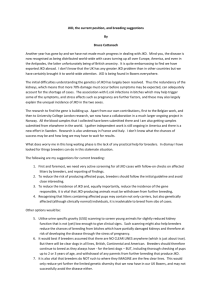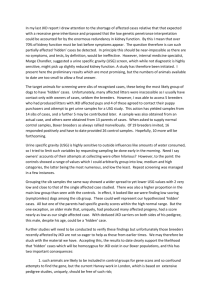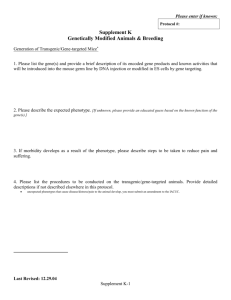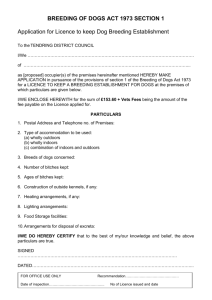Facebook JKD reports 32
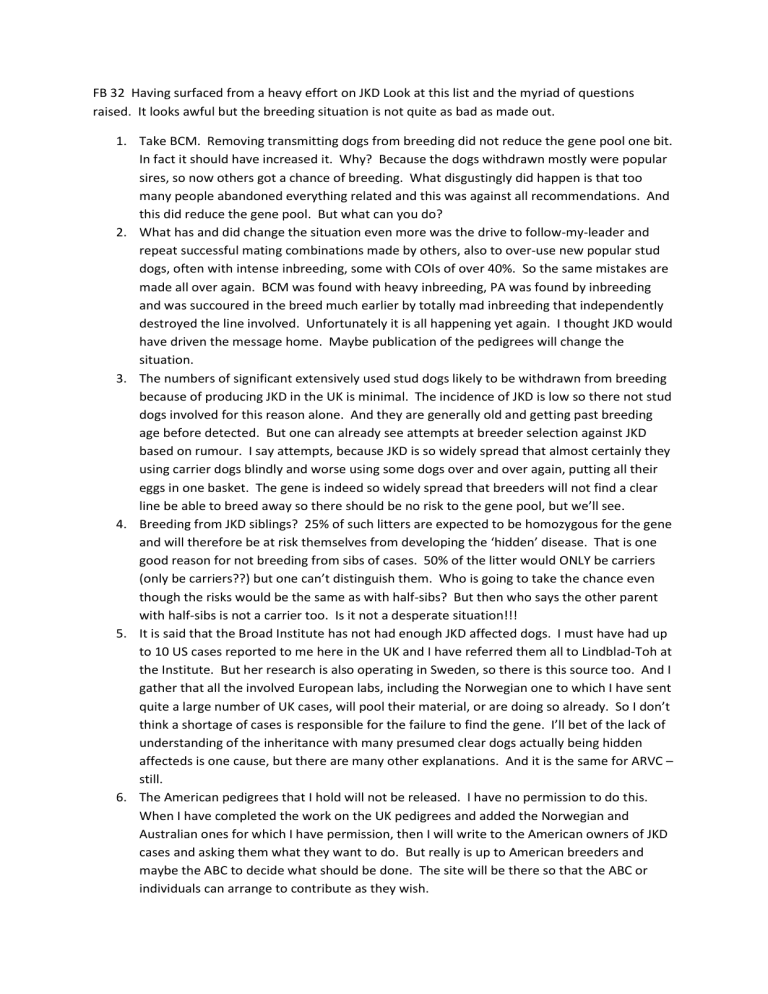
FB 32 Having surfaced from a heavy effort on JKD Look at this list and the myriad of questions raised. It looks awful but the breeding situation is not quite as bad as made out.
1.
Take BCM. Removing transmitting dogs from breeding did not reduce the gene pool one bit.
In fact it should have increased it. Why? Because the dogs withdrawn mostly were popular sires, so now others got a chance of breeding. What disgustingly did happen is that too many people abandoned everything related and this was against all recommendations. And this did reduce the gene pool. But what can you do?
2.
What has and did change the situation even more was the drive to follow-my-leader and repeat successful mating combinations made by others, also to over-use new popular stud dogs, often with intense inbreeding, some with COIs of over 40%. So the same mistakes are made all over again. BCM was found with heavy inbreeding, PA was found by inbreeding and was succoured in the breed much earlier by totally mad inbreeding that independently destroyed the line involved. Unfortunately it is all happening yet again. I thought JKD would have driven the message home. Maybe publication of the pedigrees will change the situation.
3.
The numbers of significant extensively used stud dogs likely to be withdrawn from breeding because of producing JKD in the UK is minimal. The incidence of JKD is low so there not stud dogs involved for this reason alone. And they are generally old and getting past breeding age before detected. But one can already see attempts at breeder selection against JKD based on rumour. I say attempts, because JKD is so widely spread that almost certainly they using carrier dogs blindly and worse using some dogs over and over again, putting all their eggs in one basket. The gene is indeed so widely spread that breeders will not find a clear line be able to breed away so there should be no risk to the gene pool, but we’ll see.
4.
Breeding from JKD siblings? 25% of such litters are expected to be homozygous for the gene and will therefore be at risk themselves from developing the ‘hidden’ disease. That is one good reason for not breeding from sibs of cases. 50% of the litter would ONLY be carriers
(only be carriers??) but one can’t distinguish them. Who is going to take the chance even though the risks would be the same as with half-sibs? But then who says the other parent with half-sibs is not a carrier too. Is it not a desperate situation!!!
5.
It is said that the Broad Institute has not had enough JKD affected dogs. I must have had up to 10 US cases reported to me here in the UK and I have referred them all to Lindblad-Toh at the Institute. But her research is also operating in Sweden, so there is this source too. And I gather that all the involved European labs, including the Norwegian one to which I have sent quite a large number of UK cases, will pool their material, or are doing so already. So I don’t think a shortage of cases is responsible for the failure to find the gene. I’ll bet of the lack of understanding of the inheritance with many presumed clear dogs actually being hidden affecteds is one cause, but there are many other explanations. And it is the same for ARVC – still.
6.
The American pedigrees that I hold will not be released. I have no permission to do this.
When I have completed the work on the UK pedigrees and added the Norwegian and
Australian ones for which I have permission, then I will write to the American owners of JKD cases and asking them what they want to do. But really is up to American breeders and maybe the ABC to decide what should be done. The site will be there so that the ABC or individuals can arrange to contribute as they wish.
7.
I’ll report a novel situation I heard about today which perplexes me. I had to recheck what I heard to make sure that I had understood correctly. A young Boxer, healthy one day but badly affected to die or be put down little more than a week later with a diagnosis of JKD!
Does this make sense? It had plenty of pedigree reasons to be JKD affected.
8.
It is getting through to me more and more clearly that JKD is the worst disease we have ever had to deal with in Boxers. I referto its horrible effects upon the poor animal with its slow lingering death, and also because of its devastating effects upon the owners. That there are relatively few cases does not balance this out at all. The thought of some owners withholding water from desperately thirsty pups to try and limit their peeing on the floor sends a chill through my soul.
